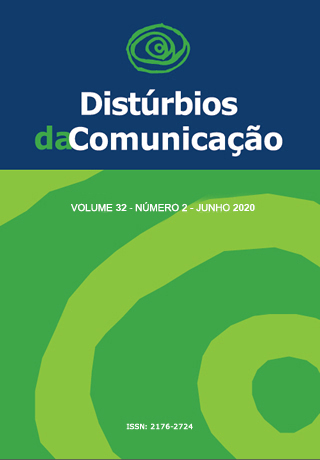Screening of the risk of dysphagia in inpatients at a university hospital
DOI:
https://doi.org/10.23925/2176-2724.2020v32i2p277-284Keywords:
Deglutition, Deglutition Disorders, Mass ScreeningAbstract
Introduction: The presence of dysphagia in hospital care increases costs to health and leads to increased hospital stay, overloading the health system. Hospitalized patients, by different underlying diseases, may present risk for dysphagia in need of rehabilitation. Purpose: To track the risk of dysphagia in patients admitted at a University Hospital. Methods: Descriptive cross-sectional study carried out from March 2016 to September 2018 in a University Hospital. The data were collected by means of chart analysis and application of the Eating Assessment Tool (EAT-10). Patients who scored 3 or more were classified with risk of dysphagia. For statistical analysis, the level of 5% of significance was considered. Results: The risk of dysphagia was identified in 191 (7.8%) patients. There was a prevalence of males, older than 60 years, and the prevalent baseline disease was cardiovascular. Dysphonia (4.2%), gastroesophageal reflux (3.8%), use of tracheostomy (1.1%) and alternative feeding tube (3.1%) were associated with the risk of dysphagia. Conclusion: The risk of dysphagia was observed in patients hospitalized mainly in the male, elderly and cardiac patients. Dysphonia, gastroesophageal reflux, use of tracheostomy and alternative tube of feeding were factors associated with the risk of dysphagiaDownloads
Metrics
Downloads
Published
How to Cite
Issue
Section
License
Copyright (c) 2020 Ckellytha Lavinya Moura de Souza, Michelle Ferreira Guimarães, Letícia Macedo Penna, Amanda Lima Carvalho Pereira, Janaina de Alencar Nunes, Elma Heitmann Mares Azevedo

This work is licensed under a Creative Commons Attribution 4.0 International License.







